Home Lighting and Mental Wellness: What Science Tells Us
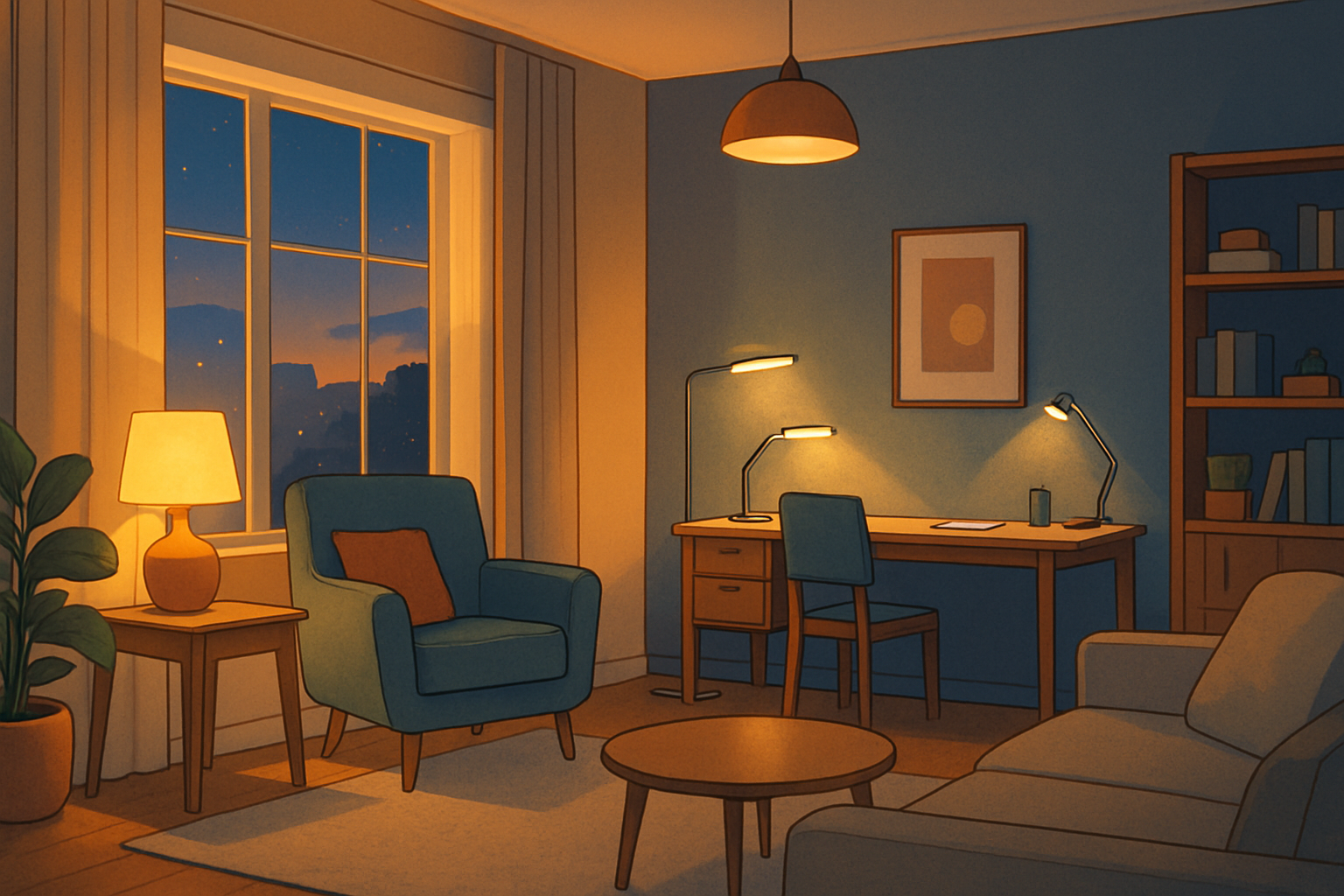
The relationship between our home environments and our health extends far beyond aesthetics, and perhaps no single design element impacts our mental wellness as profoundly as lighting. While our main guide explored how overall home design affects physical and mental health, this focused article examines the specific and powerful connections between lighting and psychological wellbeing. The science is clear: the quality, type, intensity, and timing of light exposure in our homes directly influences everything from our mood and energy levels to our sleep quality and cognitive function.
Light isn’t merely illumination—it’s a biological necessity that regulates our internal clocks, hormone production, and neurological function. As humans have moved increasingly indoors, with artificial lighting extending our days far beyond sunset, our bodies have struggled to adapt to these unnatural light patterns. The consequences for mental health can be significant, with research linking poor lighting environments to increased depression, anxiety, sleep disorders, and cognitive impairment. Conversely, thoughtfully designed lighting can actively promote mental wellness, emotional balance, and psychological resilience.
In this evidence-based exploration, we’ll uncover how the science of light can be applied to create home environments that genuinely support your psychological health throughout each day and across changing seasons.
What You’ll Learn About Light and Mental Wellness
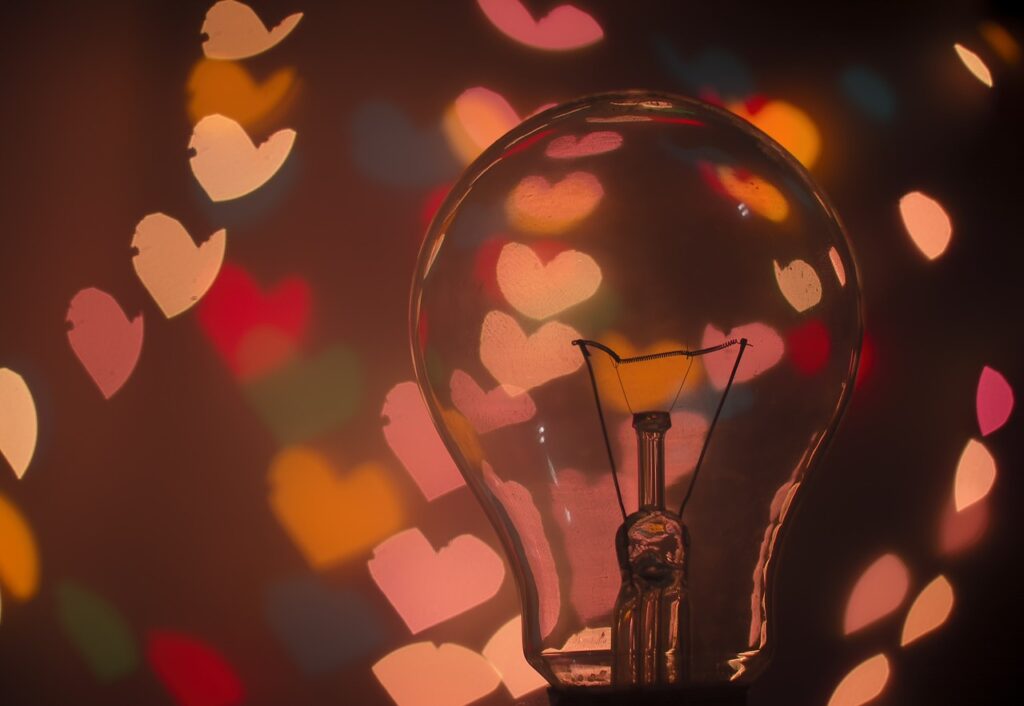
For a comprehensive overview of how home design affects overall wellbeing, check out our complete guide to home design and health.
In this focused exploration of lighting and mental wellness, we’ll cover:
💡 The neuroscience of light and how it directly affects brain function and hormone production
⏰ Circadian lighting principles that support your body’s natural rhythms and improve sleep
🧠 Mood regulation strategies using different lighting qualities and intensities
🏠 Room-specific lighting solutions optimized for different activities and emotional states
🌞 Seasonal lighting adaptations to counteract winter blues and summer sleep challenges
Each of these aspects offers practical, science-backed ways to enhance your mental wellness through intentional lighting choices. Let’s illuminate the powerful connections between light and psychological health.
Scientific research demonstrates direct connections between home lighting environments and key aspects of mental wellness including sleep quality, mood, and cognitive function.
The Neurobiology of Light: How Illumination Affects Your Brain
The influence of light on mental wellness begins with fundamental neurobiological mechanisms. Light isn’t just something we see—it triggers complex cascades of biological and chemical reactions that directly impact brain function and psychological states.
Light’s Pathway to the Brain
When light enters your eyes, it follows two distinct neural pathways:
- The visual pathway: Light hits photoreceptors (rods and cones) in the retina, converting light information into electrical signals that travel to the visual cortex, creating conscious sight.
- The non-visual pathway: Light also stimulates specialized photosensitive retinal ganglion cells containing the photopigment melanopsin. These cells send signals directly to brain regions controlling biological rhythms, hormone production, and emotional regulation.
This second pathway explains why light affects us far beyond simply helping us see. A groundbreaking study from the University of Pennsylvania found that these specialized light-sensitive cells connect directly to the hypothalamus, which regulates body temperature, hunger, sleep, and mood.
Hormonal Responses to Light
Different light exposures trigger specific hormonal responses:
- Bright, blue-rich light (morning sunlight):
- Suppresses melatonin production
- Increases cortisol (the awakening hormone)
- Boosts serotonin (associated with positive mood)
- Dim, warmer light (evening):
- Allows melatonin production to begin
- Reduces cortisol, preparing the body for rest
- Modulates serotonin to support relaxation
Research published in the Journal of Clinical Endocrinology & Metabolism demonstrated that exposure to bright light in the morning can increase cortisol by up to 50%, creating a healthy spike that promotes alertness and positive energy throughout the day. Conversely, bright light exposure in the evening can suppress melatonin production by up to 99%, significantly disrupting sleep onset and quality.
“The timing of light exposure is arguably more important than the specific type of lighting fixture you choose,” explains Dr. Mariana Figueiro, Director of the Light and Health Research Center at Mount Sinai. “Your brain interprets light as a powerful time-giving cue that synchronizes dozens of biological processes.”
This biological timing system is so sensitive that even relatively brief exposures to bright light at the wrong time—like checking your phone right before bed—can delay melatonin production by 30-45 minutes and measurably reduce sleep quality.
Light follows both visual and non-visual pathways in the brain, triggering hormonal responses that directly influence mood, energy, and cognitive function.
Circadian Lighting: Aligning Your Home with Your Biology
Perhaps the most critical aspect of lighting for mental wellness is its role in regulating your circadian rhythm—the roughly 24-hour internal clock that governs sleep-wake cycles and numerous physiological processes. Disrupted circadian rhythms have been linked to depression, anxiety, cognitive impairment, and even increased risk of chronic disease.
Understanding Circadian Disruption
Modern lighting environments frequently conflict with our biological needs:
- Insufficient daytime brightness: Most indoor environments provide only 300-500 lux, while outdoor daylight ranges from 2,000-100,000 lux. This insufficient contrast between day and night fails to properly anchor our circadian systems.
- Evening light pollution: Excessive artificial light after sunset, particularly blue-wavelength light from screens and LEDs, suppresses melatonin and disrupts sleep onset.
- Inconsistent timing: Irregular light exposure patterns—especially on weekends versus weekdays—create “circadian confusion” similar to jet lag.
Research from Harvard Medical School found that disrupted lighting patterns can shift sleep-wake cycles by up to 3 hours in just a week, significantly impacting mood, cognitive performance, and overall mental wellness.
Creating a Circadian-Supportive Home
Implement these evidence-based strategies to align your home lighting with your biology:
- Morning light anchoring:
- Expose yourself to bright light within 30-60 minutes of waking (ideally natural sunlight)
- Position your breakfast area near windows
- Consider a dawn simulator alarm clock ($25-100) that gradually increases light before your wake time
- Daytime light optimization:
- Maximize natural daylight through window treatments that admit light while controlling glare
- Use cooler, brighter artificial lighting (4000-5000K) in work and activity areas
- Take brief “light breaks” outdoors if working in dimly lit environments
- Evening transition planning:
- Program gradual light shifts 2-3 hours before bedtime
- Reduce overall light intensity by 50-75%
- Shift to warmer color temperatures (2700-3000K)
- Use dimmers, floor lamps, and table lamps rather than overhead lighting
- Nighttime protection:
- Eliminate blue light sources in sleeping areas
- Use amber/red night lights that minimally affect melatonin
- Install blackout curtains or wear an eye mask for optimum sleep
Pro Tip: Create a “sunset routine” by gradually turning off overhead lights and switching to lower, warmer light sources as evening progresses. Program smart bulbs to automatically shift color temperature and intensity, or simply designate specific lamps for evening-only use. This mimics the natural light transition our ancestors experienced and signals to your brain that it’s time to prepare for sleep.
A large-scale study published in the International Journal of Bipolar Disorders found that implementing circadian-supportive lighting reduced symptoms of depression by 43% and improved sleep efficiency by 31% compared to standard lighting conditions.
Circadian-supportive lighting creates appropriate brightness and color temperature transitions throughout the day to align with natural biological rhythms.
Light Quality: Beyond Brightness and Color
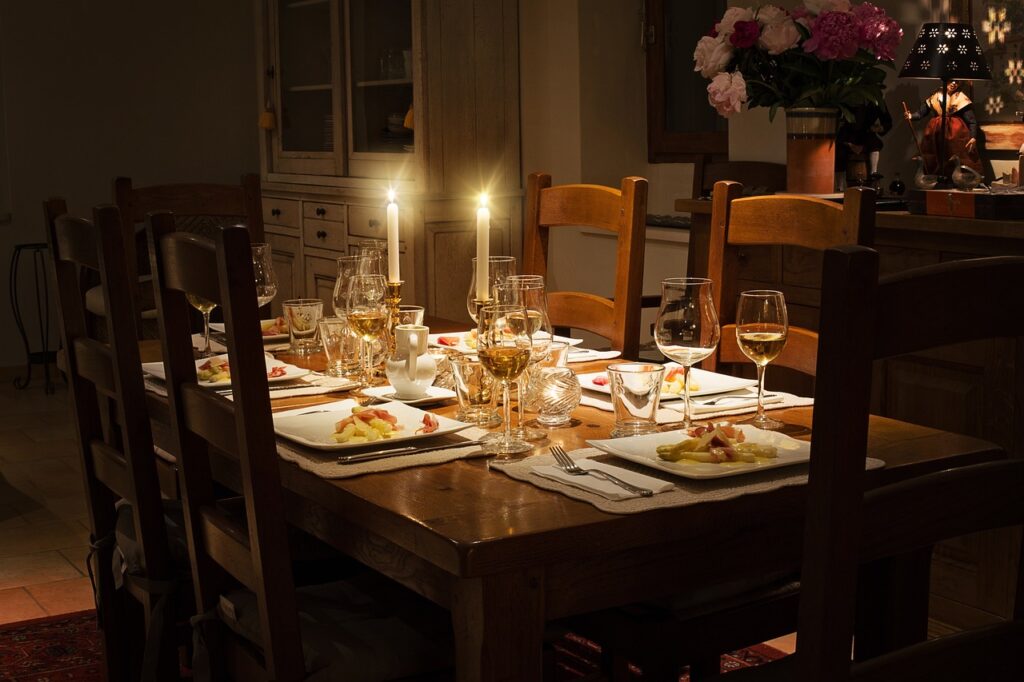
While timing is crucial, the qualitative aspects of light—its distribution, directionality, and spectral characteristics—also significantly impact mental wellness.
Natural vs. Artificial Light
Natural sunlight provides specific benefits that most artificial lighting cannot fully replicate:
- Full-spectrum content: Sunlight contains the complete range of light wavelengths, including beneficial near-infrared and ultraviolet portions that most artificial lights lack.
- Dynamic variation: Natural light constantly changes in intensity and color, which helps maintain alertness and cognitive function.
- Psychological benefits: Views of natural light sources (like windows) expand perceived space and connect us with the outside world, reducing feelings of confinement.
Research from the Lighting Research Center shows that people working in naturally lit environments report 51% less eye strain, 63% fewer headaches, and significantly higher job satisfaction compared to those in artificially lit spaces.
When natural light is limited, these strategies can help:
- Full-spectrum LEDs: Choose high-quality options with Color Rendering Index (CRI) of 90+ for better color reproduction
- Dynamic lighting systems: Install programmable lights that automatically adjust throughout the day
- Light therapy boxes: Use clinically-proven devices (10,000 lux) for 20-30 minutes each morning, especially in winter months
Light Distribution and Mental Space
How light fills a space affects perception and psychological comfort:
| Light Pattern | Psychological Effect | Best Applications |
|---|---|---|
| Diffuse, even light | Creates calm, reduces tension | Relaxation areas, bedrooms |
| Directional, focused light | Enhances attention and task focus | Home offices, reading nooks |
| Varying light zones | Creates perceptual interest and reduces monotony | Living areas, multi-use spaces |
| Cove or indirect lighting | Expands perceived space, reduces harsh shadows | Small rooms, hallways, basements |
“The distribution of light in a space affects both visual comfort and psychological perception,” explains Kevin Houser, PhD, professor of architectural engineering. “Humans evolved with light coming primarily from above. Lighting that mimics these natural patterns feels inherently more comfortable.”
Implementation strategies include:
- Layer different light sources at various heights (floor lamps, table lamps, pendants, overhead fixtures)
- Create light variance with a mix of ambient, task, and accent lighting
- Use reflective surfaces strategically to bounce light and extend its reach
- Control glare and shadows with proper fixture positioning and diffusers
As discussed in our article on 5 Design Elements That Improve Everyday Wellbeing, these lighting quality considerations work synergistically with other design elements to create truly supportive environments.
Light quality factors including distribution, directionality, and layering significantly impact psychological comfort and spatial perception.
Lighting for Different Emotional States and Activities
Different mental and emotional needs require different lighting environments. Strategic lighting can actively support specific psychological states and activities.
Focus and Productivity
For home offices and study areas, lighting that enhances concentration includes:
- Cool color temperatures (4000-5000K) that promote alertness and cognitive performance
- Adequate brightness levels (500+ lux) at work surfaces to reduce eye strain
- Task lighting positioned to eliminate shadows on work areas
- Minimal glare on screens and reflective surfaces
- Dynamic lighting that subtly changes to prevent adaptation and maintain alertness
Research from the University of Greenwich found that properly designed task lighting improved cognitive performance on problem-solving tasks by up to 15% compared to standard office lighting.
“For productive work, you need sufficient illumination without creating visual fatigue,” notes workplace lighting researcher Dr. Anya Hurlbert. “The best setup includes ambient room lighting plus dedicated task lighting, with the task light providing about three times the brightness of the surrounding area.”
Relaxation and Stress Reduction
For spaces dedicated to unwinding and emotional restoration:
- Warmer color temperatures (2200-2700K) that signal safety and comfort
- Lower light levels (100-200 lux) that allow physiological relaxation
- Indirect lighting that eliminates harsh shadows and creates visual softness
- Dimmable sources that can be adjusted to match changing needs
- Fire-like light sources (candles, amber LEDs, fireplaces) that evolutionarily signal safety
A University of Toronto study demonstrated that exposure to warm, dim light for just 30 minutes significantly reduced reported anxiety levels and lowered cortisol compared to brighter, cooler lighting.
Important: For maximum relaxation benefits, position yourself in the light but avoid having the light source shine directly in your eyes. This allows your pupils to dilate slightly, which is associated with parasympathetic (rest-and-digest) nervous system activation.
Social Connection and Communication
For dining areas and gathering spaces:
- Moderate, warm lighting (300-400 lux, 2700-3000K) that flatters faces and encourages conversation
- Centered lighting over gathering points that creates a sense of intimacy
- Face-illuminating positions that enhance emotional recognition in conversations
- Adjustable options to transition from lively gatherings to intimate conversations
Studies from the Lighting Research Center indicate that lighting designed for social spaces can increase conversation length by 24% and improve reported quality of social interactions when compared to standard overhead lighting.
For more insights on creating multi-sensory environments that support wellbeing, including lighting considerations, see our detailed article on Biophilic Design: How Bringing Nature Indoors Boosts Health.
Tailored lighting approaches support different emotional states and activities, from focus and productivity to relaxation and social connection.
Seasonal Lighting Strategies for Year-Round Mental Wellness
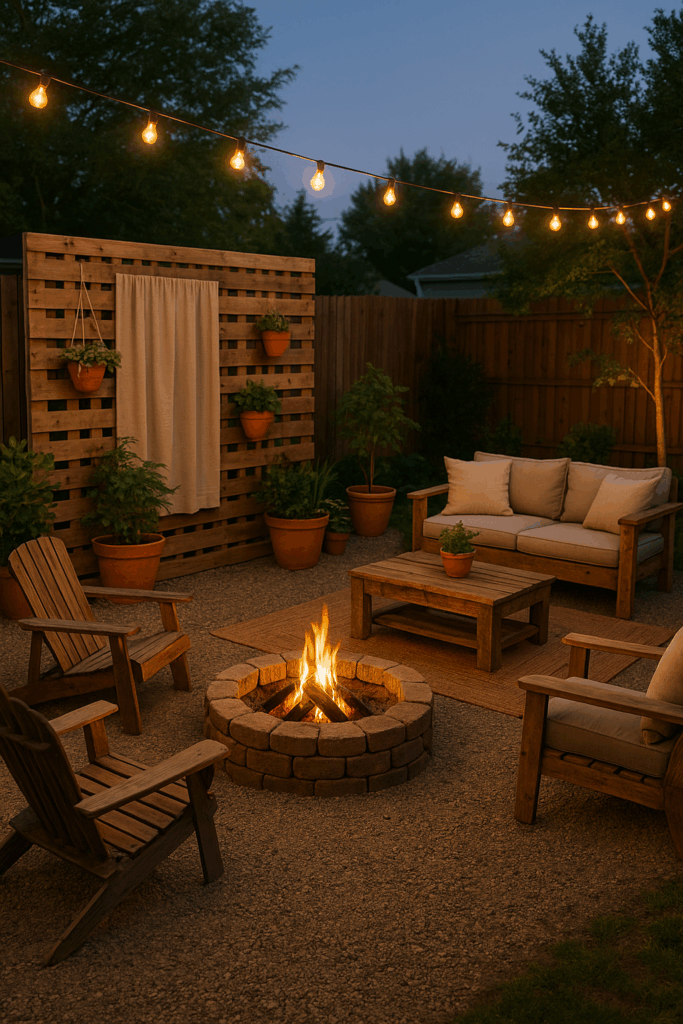
Our lighting needs vary substantially throughout the year, particularly in locations with significant seasonal variation in natural light. Adapting your home lighting seasonally can help maintain mental wellness across changing external conditions.
Combating Winter Blues and SAD
Seasonal Affective Disorder (SAD) and its milder form, winter blues, affect an estimated 10-20% of people in northern regions. These conditions are directly linked to reduced light exposure during shorter winter days.
Evidence-based lighting interventions include:
- Morning light therapy: 20-30 minutes of exposure to a 10,000 lux light therapy box within an hour of waking (clinically proven to reduce SAD symptoms by up to 75%)
- Dawn simulation: Programmable lights that gradually increase 30-45 minutes before wake time, mimicking sunrise even on dark winter mornings
- Maximize natural light: Position furniture to capture available daylight; keep windows clean and unobstructed; use reflective surfaces to extend light penetration
- Increase overall ambient brightness: Temporarily increase indoor light levels by 30-50% during winter months
- Light boxes in key locations: Position smaller light therapy devices in areas where you spend morning time (kitchen, bathroom, home office)
Dr. Norman Rosenthal, the researcher who first identified SAD, explains: “The efficacy of light therapy is comparable to antidepressant medications for seasonal depression, but without the side effects. The key is consistency and proper timing—morning light exposure is significantly more effective than light at other times of day.”
Summer Sleep Protection
In summer months, especially in northern latitudes, excessive evening light can disrupt sleep patterns. Protective strategies include:
- Blackout solutions: Install room-darkening curtains or blinds in bedrooms (particularly important for children’s rooms and shift workers)
- Evening light discipline: Begin dimming lights 2-3 hours before bedtime, even when it’s still light outside
- Blue-blocking strategies: Use blue-filtering glasses after sunset; install apps that reduce blue light on electronic devices; switch to amber-colored bulbs in evening areas
- Create artificial sunsets: Program smart lighting to shift to warmer hues and lower intensity regardless of outdoor conditions
Transitional Season Adaptations
Spring and fall require their own lighting approaches:
- Gradual transitions: Adjust indoor lighting gradually over 2-3 weeks as seasons change
- Morning light anchoring: Maintain consistent morning bright light exposure despite changing sunrise times
- Weather-responsive lighting: Create lighting “recipes” for different weather conditions (brighter, cooler lighting on cloudy days; softer, warmer lighting on bright days)
For those living in regions with extreme seasonal light variation or those particularly sensitive to seasonal changes, specialized light therapy equipment may be beneficial. Clinical-grade light therapy devices typically provide 10,000 lux of broad-spectrum light with minimal UV exposure, and have substantial evidence supporting their effectiveness for seasonal mood disorders.
Seasonal lighting adaptations help maintain mental wellness throughout the year by compensating for changes in natural light availability and characteristics.
Solving Common Home Lighting Problems
Many homes have lighting challenges that negatively affect mental wellness. Here are solutions for the most common issues:
Insufficient Daylight
For spaces with limited natural light:
- Light tubes and solar tunnels: Channel daylight from roofs to interior spaces ($200-500 plus installation)
- Strategic mirrors: Position across from windows to effectively double available daylight
- Light-colored surfaces: Repaint walls in high-reflectance colors (LRV 70+) to maximize light bouncing
- Replace solid doors with partially glazed versions for better light flow between rooms
- Simulated skylights: New LED panels that create convincing artificial skylights ($200-1000)
“Homes with insufficient daylight often lead residents to experience lower vitamin D levels, disrupted circadian rhythms, and higher rates of mood disorders,” explains architect and daylighting specialist Judith Heerwagen. “Creative solutions that maximize available light can substantially improve these outcomes.”
Harsh or Institutional Lighting
Many homes suffer from lighting that creates psychological discomfort:
- Replace fluorescent fixtures with high-quality LEDs with high color rendering (CRI 90+)
- Add diffusers to existing fixtures to reduce glare and soften light
- Install dimmer switches for adjustability ($15-40 per switch)
- Supplement overhead lighting with floor and table lamps at varied heights
- Replace cool-white bulbs with warmer options (2700-3000K) in living spaces
Pro Tip: Create a “lighting map” of your home, noting areas that feel uncomfortable or that you tend to avoid. Often, these are spaces with lighting problems you’ve unconsciously adapted to but that may be affecting your mood and behavior. Pay special attention to spaces where you experience eyestrain, headaches, or fatigue.
Light Pollution and Sleep Disruption
For homes affected by external light sources:
- Layered window treatments: Combine blackout curtains with sheer daytime options
- Light-blocking window film: Apply to windows affected by streetlights or neighboring buildings
- Strategic landscaping: Plant privacy hedges or trees to block unwanted light sources
- Sleep masks: Use comfortable, molded options for individual protection
- Illumination zones: Create a graduated lighting plan with brighter areas farther from bedrooms
For rental properties where permanent solutions aren’t possible, focus on portable lighting options, temporary window treatments, and personal light therapy devices that can move with you.
Strategic solutions for common home lighting challenges that impact mental wellness, including insufficient daylight and harsh lighting environments.
Light and Vulnerable Populations: Special Considerations
Certain groups have unique lighting needs that require special attention for optimal mental wellness.
Lighting for Aging Eyes
As we age, our eyes require different lighting conditions:
- Increased illumination: People over 65 typically need 2-3 times more light than younger adults for the same visual acuity
- Reduced glare: Aging eyes are more sensitive to glare, requiring better diffusion and indirect lighting
- Higher contrast: Enhanced contrast between objects and backgrounds becomes increasingly important
- Blue light sensitivity: Older adults often experience increased sensitivity to blue wavelengths
Practical solutions include:
- Task lighting that provides focused illumination for reading, cooking, and detailed work
- Matte surfaces that minimize reflection and glare
- Transitional lighting between rooms to allow eyes to adapt more comfortably
- Yellow-tinted glasses for night driving or evening screen use
Children and Development
Lighting affects children’s development, learning, and behavior:
- Consistent sleep cues: Regular lighting transitions signal bedtimes and support healthy sleep habits
- Appropriate brightness: Sufficient light for homework and reading (500+ lux) without causing overstimulation
- Natural light exposure: Regular daylight exposure supports visual development and circadian regulation
- Blue light management: Strict control of blue light sources in the evening, particularly for adolescents
“Children’s developing circadian systems are particularly susceptible to disruption from inappropriate lighting,” notes pediatric sleep researcher Dr. Sarah Honaker. “Consistent light and dark patterns are as important as regular bedtimes for establishing healthy sleep habits.”
Neurodivergent Sensitivities
Individuals with autism, ADHD, sensory processing differences, or certain neurological conditions often have heightened sensitivity to lighting characteristics:
- Eliminate fluorescent lighting which can cause perceptible flickering and audible noise
- Provide lighting control options to accommodate varying sensory needs
- Reduce stark brightness contrasts between areas to minimize visual stress
- Create sensory retreat spaces with gentle, adjustable lighting
- Consider colored lighting options for those who find certain hues calming (often blues and greens)
For households with members who have specific sensory needs, creating adaptable lighting zones allows different areas to be optimized for different sensitivities. Wireless lighting controls make these adaptations more accessible and adjustable as needs change.
Special lighting considerations for different population groups including aging adults, children, and individuals with neurodivergent sensitivities.
Practical Implementation: Your Mental Wellness Lighting Plan
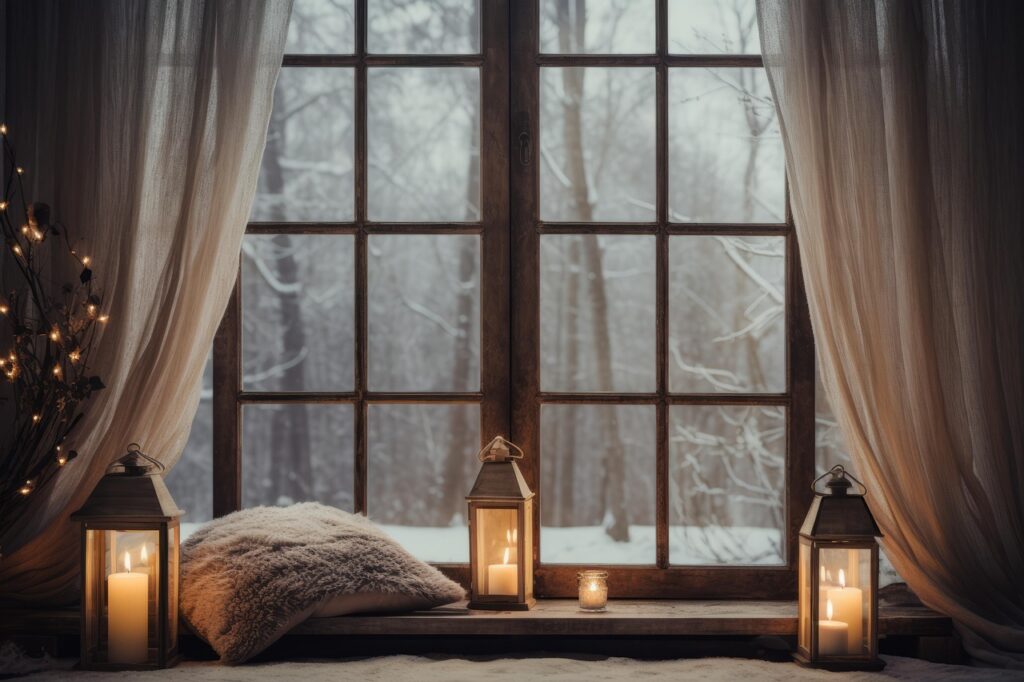
Creating a home lighting environment that genuinely supports mental wellness doesn’t require expensive renovations. This systematic approach helps you make meaningful improvements regardless of your budget or living situation.
Assessment: Understanding Your Current Light Environment
Begin by evaluating your existing lighting conditions:
- Conduct a 24-hour light audit: Note lighting patterns throughout one typical day:
- When and where does natural light enter your home?
- What are the color temperatures of your current bulbs?
- Where do you experience glare, shadows, or insufficient light?
- Identify critical zones: Determine the spaces where lighting improvements would most impact your wellbeing:
- Morning preparation areas
- Work and focus spaces
- Evening relaxation areas
- Bedrooms and sleep environments
- Consider seasonal factors: How does light in your home change across seasons? Which spaces are most affected by seasonal light shifts?
- Map your activities: Note where specific activities occur and whether current lighting supports them appropriately.
Prioritized Implementation
Start with these high-impact, accessible changes:
- Morning light enhancement:
- Optimize bedroom and bathroom lighting for awakening
- Create a designated bright morning area for breakfast or coffee
- Remove obstacles to natural morning light
- Sleep environment protection:
- Eliminate all blue light sources from bedrooms
- Install room-darkening solutions for windows
- Replace bright white nightlights with red/amber alternatives
- Evening transition system:
- Designate specific lamps for evening-only use
- Install at least one dimmer switch in main living areas
- Create a “lighting down” routine before bedtime
- Workspace optimization:
- Position desks to maximize natural light without screen glare
- Add task lighting with appropriate brightness (500+ lux) and color temperature
- Ensure background lighting reduces contrast between screen and surroundings
Attention: Even modest lighting improvements can yield significant mental wellness benefits when strategically implemented. If your budget is limited, focus first on sleep environments and morning light exposure, as these have the most direct impact on mental health through circadian regulation.
For additional strategies that complement lighting improvements, explore our comprehensive guide to How Your Home Design Affects Your Physical and Mental Health.
A systematic approach to implementing mental wellness lighting includes assessment, prioritization, and strategic improvements in key areas.
Frequently Asked Questions
Common questions about the relationship between home lighting and mental wellness, with evidence-based answers.
💡 Can changing my home lighting really improve my mood and mental health?
Yes, substantial research confirms lighting’s impact on mental health. A landmark study in the Journal of Affective Disorders found that optimized lighting environments reduced depression scores by 43% compared to standard lighting. The effect works through multiple pathways: proper lighting regulates circadian rhythms, influences hormone production (including serotonin and melatonin), affects vitamin D synthesis, and impacts cognitive processing. The most pronounced effects typically occur after 2-3 weeks of consistent lighting improvements.
🔦 What kind of lighting is best for someone with anxiety?
For anxiety reduction, focus on creating lighting environments that activate the parasympathetic nervous system. Research indicates this includes: warm color temperatures (2700-3000K); diffuse, indirect lighting that eliminates harsh shadows; moderate brightness levels (150-300 lux for relaxation areas); and light sources positioned at mid to low heights rather than overhead. Dynamic but gentle lighting—like candles or subtle color-changing systems—can also provide helpful sensory anchoring for anxiety management. Avoid fluorescent lighting, which has been associated with increased autonomic nervous system activation in anxiety-prone individuals.
⏰ Does the timing of light exposure really matter that much?
Timing is arguably the most critical aspect of light for mental wellness. Studies show that identical light exposures can have opposite effects depending on when they occur. Morning bright light exposure helps regulate circadian rhythms, improves mood, and enhances alertness throughout the day. Conversely, the same bright light in the evening can disrupt melatonin production, interfere with sleep onset, and contribute to mood disturbances the following day. Consistency in light/dark patterns is particularly important—irregular exposure creates “social jet lag” with negative psychological consequences.
💻 How harmful is the blue light from my devices for my mental health?
Evening exposure to blue-wavelength light from screens has been shown to suppress melatonin production by up to 50% and delay sleep onset by 30-45 minutes. This disruption affects not just sleep but next-day mood, cognitive function, and emotional regulation. However, the same blue-rich light during daytime hours can positively impact alertness and mood. The solutions are timing-based: use devices normally during the day, but employ blue-blocking strategies (night mode settings, blue-blocking glasses, or screen alternatives) in the 2-3 hours before bedtime.
🏢 I work under fluorescent lights all day. What can I do to protect my mental wellness?
Fluorescent lighting can impact mental wellness through several mechanisms: imperceptible flickering that stresses the visual system, poor color rendering that creates visual fatigue, and spectral distribution that may inadequately support circadian regulation. Protective strategies include: positioning your workspace near windows for natural light; adding a small full-spectrum desk lamp in your immediate work area; taking regular outdoor breaks (even 5-10 minutes significantly helps); using computer glasses with a slight amber tint; and compensating with optimal lighting at home, particularly in the morning and evening hours.
Additional Resources and Next Steps
Expand your knowledge and implementation of lighting for mental wellness with these valuable resources.
For Comprehensive Understanding
For a complete exploration of how home design affects health, including lighting considerations, check out our in-depth guide: How Your Home Design Affects Your Physical and Mental Health
Related Cluster Articles
- 5 Design Elements That Improve Everyday Wellbeing
- Biophilic Design: How Bringing Nature Indoors Boosts Health
Have you noticed how different lighting affects your mood or mental state? What lighting changes have made the biggest difference in your home environment? Share your experiences in the comments below!

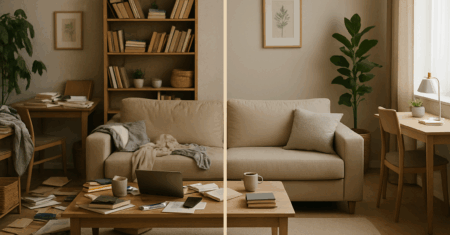

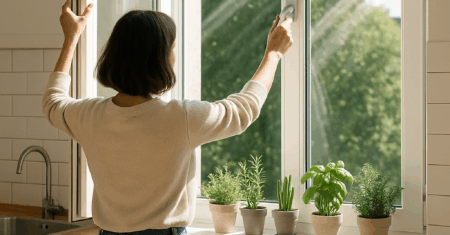
0 Comments